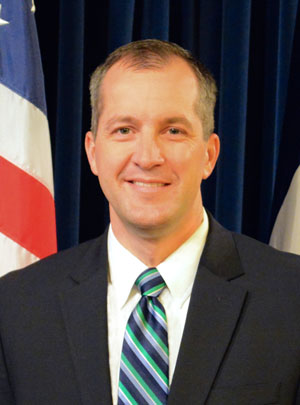The outbreak of avian flu that drove poultry and egg prices sky high this year has carried into the fall as the virus continues to spread through wild birds, a sharp contrast to what happened during the last major attack of the virus seven years ago.
Preliminary data show there have been more occurrences this year of what scientists call “spillover events,” which is where the virus that causes highly pathogenic avian influenza (HPAI) spreads from wild birds to domestic flocks, said Jeffrey Sullivan, a biologist at the U.S. Geological Survey's Eastern Ecological Science Center in Maryland.
And the “outbreak appears to have persisted in the wild bird population longer than we have seen previously,” he said.
The 2014-15 outbreak was mostly confined to spring migration, whereas this year, the virus picked up again during the fall migration period after new cases slowed somewhat this summer. In addition, the 2014-15 outbreak affected only 21 states, while 46 states reported positive cases this year.
“One of the unfortunate things about this virus returning in the fall rather than being confined to the spring, is we now have to accept the reality that this is an any time of year issue,” said Iowa Secretary of Agriculture Mike Naig.
The current H5N1 strain of the virus, which has hit Iowa particularly hard, was first detected in the United States in January.
As of last week, 618 flocks with 50.32 million birds were confirmed to be infected. Of these, 264 were commercial and 354 were backyard flocks, according to USDA’s Animal and Plant Health Inspection Service. In Iowa alone, flocks totaling nearly 15.5 million birds — 30% of the total number of birds affected in the United States — have been depopulated.
 Iowa Ag Secretary Mike Naig
Iowa Ag Secretary Mike NaigSullivan was one of a group of government scientists who celebrated a big first in October. They tracked the movements of a wild lesser scaup, a diving duck, known to be infected with HPAI. It was the first such tracking in North America.
The research could one day help scientists provide poultry producers with real-time estimates of when and where HPAI could spread from wild birds to domestic birds, called spillover events.
More tracking data from infected wild birds is needed before this new research can benefit the poultry industry, but researchers are simultaneously making strides in the development of risk transmission models and vaccines.
While some avian flu vaccines for poultry are already being used in other countries, including Mexico and Egypt, the United States has yet to authorize their use.
The tracking study was a cooperative effort among the USGS, University of Delaware, U.S. Fish and Wildlife Service, and University of Georgia. The group has been tracking uninfected wild bird movements for years and compiling the data in transmission interface models, which will eventually allow egg and poultry producers to calculate risk in their individual counties.
“Our group is continuing to develop transmission risk models for each week of the year,” Sullivan said. “We are hoping these transmission interface models will be the first stage of helping prevent spillover events, especially at the county level.”
According to the National Agricultural Statistics Services, the U.S. egg and poultry industries are huge. Americans eat more poultry than any other type of meat, and in 2020, the value of all poultry products produced in the United States exceeded $35.5 billion.
While the final cost of the current ongoing outbreak has yet to be tallied, the 2014-15 outbreak resulted in the loss of 50 million chickens and turkeys and required $879 million in public expenditures to eradicate the disease from poultry production, according to a 2021 study published in Food Policy.
The 2014-15 outbreak has been labeled the costliest animal disease outbreak in U.S. history, but the current ongoing outbreak has already surpassed the 2014-15 crisis in terms of bird losses, even though the nation’s response has improved from seven years ago.
“In Iowa so far in 2022, there have been 23 sites affected, whereas in 2015 there were 77 sites. This year’s spread is largely due to wild bird introductions while 2015’s spread was largely farm to farm,” Naig said.
“Our producers deserve a lot of credit for elevating their biosecurity efforts. They learned from 2015,” he added. “We have had earlier detections and aggressive efforts to contain the virus through depopulations, proper disposal, and cleanup.”
Since 2015, Iowa and other states have updated and rewritten their emergency response plans. Iowa for one continues to test its plan, identifying gaps and then continuously updating and exercising its tweaked plan to improve response capabilities.
When a farm becomes infected, regardless of whether it is a backyard or commercial operation, the Iowa Department of Agriculture and Land Stewardship moves quickly to get the word out.
“We think it is important to be transparent. We send a press release out for each positive case, whether it is a commercial or backyard flock. We want everyone in agriculture to know what is going on,” Naig said.
State agencies provide the boots on the ground, according to Naig, and are a major part of effective responses. While the states permit movement of birds, implement quarantines, and provide diagnostic services, education, and notification of outbreaks, USDA provides indemnity and research.
Interested in more coverage and insights? Receive a free month of Agri-Pulse!
In 2018, APHIS finalized the conditions for indemnity, adopting a set of 14 biosecurity principles established by the National Poultry Improvement Plan (NPIP), which serve as the minimum biosecurity principles poultry operations need to follow. Large operations are subject to a biosecurity statement requirement and must be audited every two years to ensure compliance.
Last spring, as losses from HPAI hit 35 million birds, Secretary of Agriculture Tom Vilsack announced that USDA had already paid about $146 million in indemnities to poultry owners, with $263 million still available. In the 2014-15 outbreak, USDA paid a total of $190 million in indemnity payments.
Following that announcement, when losses hit 38 million birds, USDA said it would allocate an additional $400 million from the Commodity Credit Corp. to address the current outbreak, including indemnity, diagnostics, field activities, and other emergency response costs. These funds were in addition to the $393 million in emergency funding announced in March and April.
One of the reasons that containing HPAI is so costly is that depopulation is the main way to combat outbreaks, since effective vaccines are still not available in the United States.
One of the challenges to creating effective vaccines is that avian influenzas can mutate rapidly, and to contain an outbreak the industry needs targeted vaccines that are ready to deploy, according to Yuying Liang, a researcher at the University of Minnesota, who has developed eight vaccine candidates against highly pathogenic H5 and H7 avian influenza viruses.
 Yuying Liang, University of Minnesota
Yuying Liang, University of Minnesota“We do not know what strain or mutation of HPAI will appear or when it will appear. Existing vaccines are unlikely to be effective in new outbreaks,” she said. “Our approach is to use a live viral vector that would cause a strong and broadly protective immune response both in antibodies and T-cells.”
While these and other vaccines could one day be found safe and effective for use in poultry, there are still some policy hurdles.
According to Science magazine, some researchers worry that if vaccinating is not done carefully, H5N1 could persist in the environment and continue to mix with strains already in wild birds. To prevent this, poultry producers would need to test for the virus once their birds have been vaccinated to be sure it isn’t circulating silently in any birds inadvertently missed or that didn’t respond fully to the vaccine.
“Vaccines could have trade implications and that’s important. We need to make sure we don’t do things that disrupt trade,” Naig said. “I’m supportive of the research, but there could be very real consequences.”
For more news, go to www.Agri-Pulse.com

